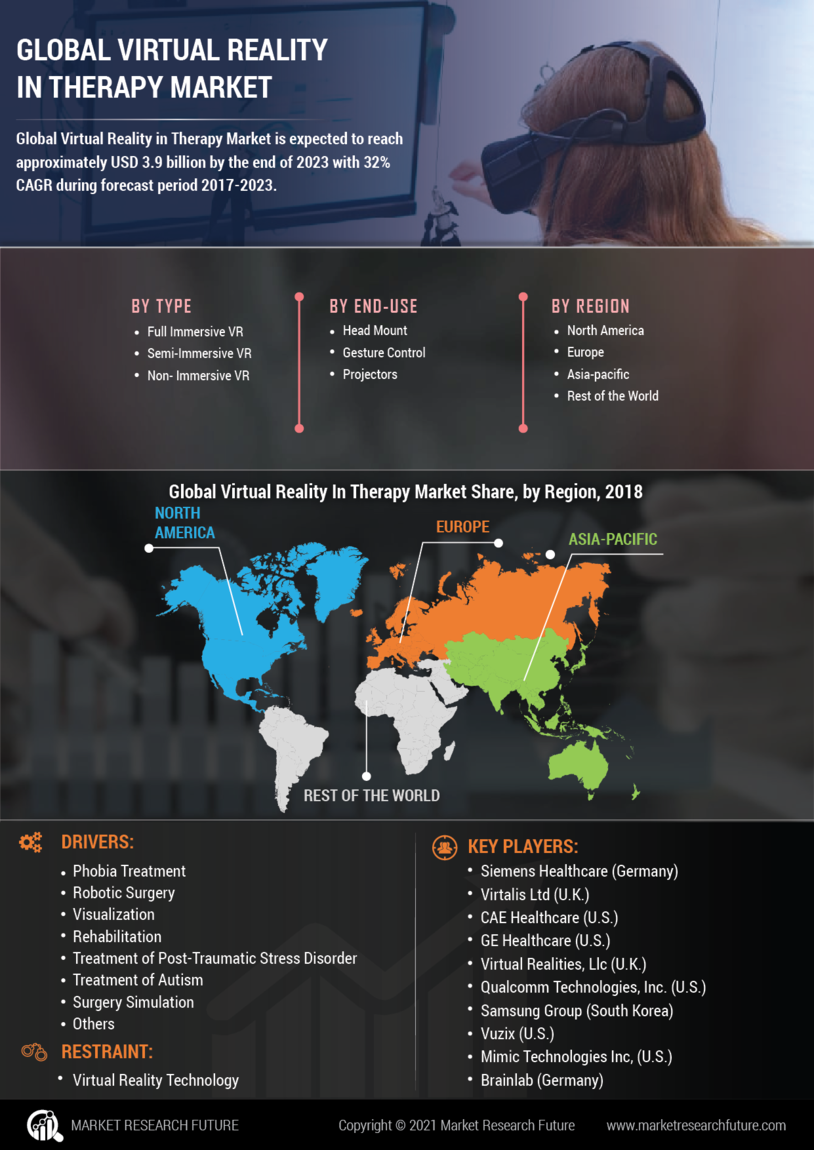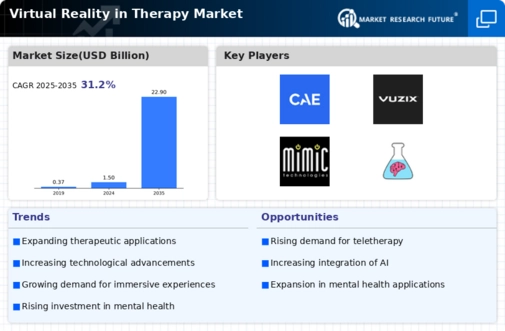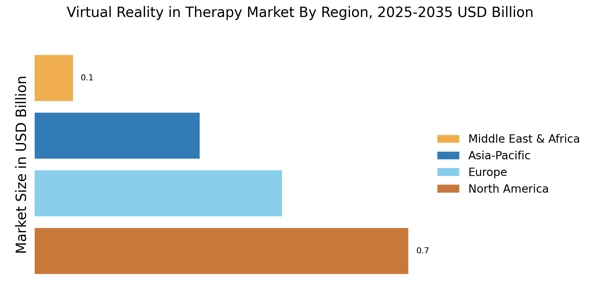Virtual Reality Therapy Market Summary
As per MRFR analysis, the Virtual Reality in Therapy Market was estimated at 1.5 USD Billion in 2024. The Virtual Reality in Therapy industry is projected to grow from 1.968 USD Billion in 2025 to 29.75 USD Billion by 2035, exhibiting a compound annual growth rate (CAGR) of 31.2 during the forecast period 2025 - 2035.
Key Market Trends & Highlights
The Virtual Reality in Therapy Market is experiencing robust growth driven by technological advancements and increasing acceptance of alternative therapies.
- North America remains the largest market for virtual reality in therapy, driven by high healthcare expenditure and technological adoption.
- Asia-Pacific is emerging as the fastest-growing region, fueled by rising awareness and investment in mental health solutions.
- Full immersive VR continues to dominate the market, while semi-immersive VR is rapidly gaining traction due to its cost-effectiveness and accessibility.
- The rising prevalence of mental health disorders and increased funding for mental health initiatives are key drivers propelling market expansion.
Market Size & Forecast
| 2024 Market Size | 1.5 (USD Billion) |
| 2035 Market Size | 29.75 (USD Billion) |
| CAGR (2025 - 2035) | 31.2% |
Major Players
Meta Platforms (US), Google (US), Microsoft (US), Oculus (US), HTC (TW), Sony Interactive Entertainment (JP), Unity Technologies (US), Linden Lab (US), Virtually Better (US)


















Leave a Comment